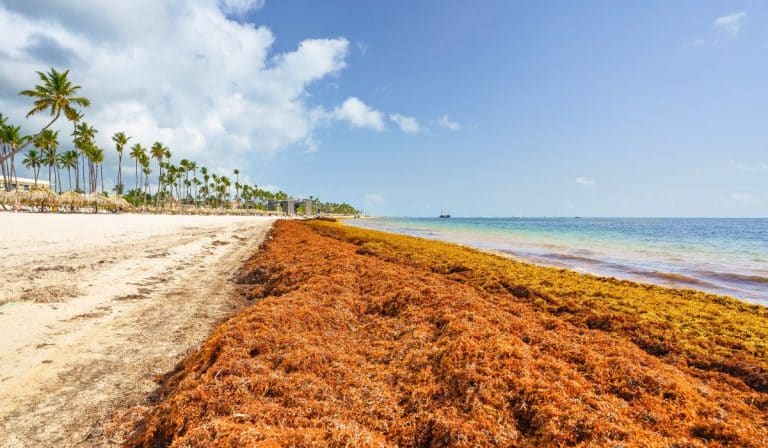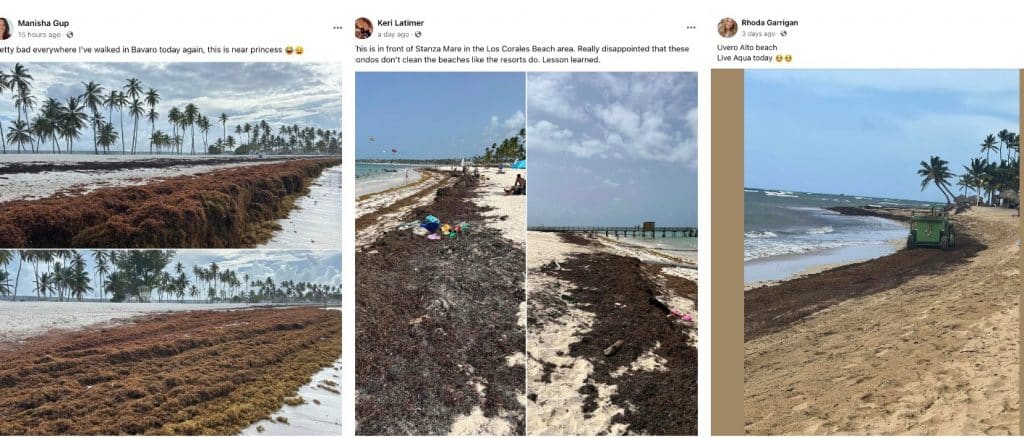While “normalcy” and beauty gradually return to the beaches of the Mexican Caribbean, the coasts of Puerto Rico, the Lesser Antilles, and the Dominican Republic seeing their worst sargassum days.
According to hydrobiologist Esteban Amaro, director of the Sargassum Monitoring Network of Quintana Roo, last month it was reported that a large mass of sargassum was drifting north, and today, a month later (July 15), the trend has been confirmed.
As of today, “sargassum is on its way to the Lesser and Greater Antilles. It is also massively impacting Puerto Rico and the Dominican Republic coasts,” he said.
This translates into the Mexican Caribbean having a sargassum-free summer. The same phenomenon was observed last year when sargassum moved away from the Mexican coasts as summer approached.
It’s not magic. That happens because rising temperatures modify ocean currents, experts say.
“We won’t have sargassum at least until the end of the year. That means we won’t see sargassum for another six or seven months. It’s possible, however, that we will have an early arrival in 2025 around January or February with a peak in April or May,” the expert forecasted.

The University of South Florida reports similar observations.
According to satellite photographs revealed by this institution, the area surrounding the Lesser Antilles has experienced an increase in sargassum in the last few weeks.
“Although slight increases in the sargassum amount were found in the eastern Caribbean Sea, the western Caribbean Sea experienced a significant reduction in sargassum.”
“The sargassum amount decreased in June, with the most relative reduction in the western Caribbean Sea and eastern Atlantic. Total sargassum amount in all regions combined increased slightly to 10.5 million metric tons, exceeding the 75 percentile of historical levels for June,” reads the official monitoring website.
For the time being, the seaweed situation in the Dominican Republic is not looking good.



According to members of our FB group, Dominican Republic Sargassum Seaweed Report, most beaches in this country are currently buried under tons of sargassum.
“I’ve been in the Bavaro (El Cortecito) area since Thursday and have walked at least a few miles up and down the coast from my area — it’s been quite hard to find patches of the sea that aren’t filled with carpets of sargassum (water has been black and thick with the grass in these areas), or with a thick pile of it on the beach as well,” reported an anonymous commenter on June 22. They clarify that there are indeed a “few patches” where you can swim.
When visiting the popular beach of Gran Bávaro, Chantale R. found a similar landscape.
“Today at the Grand Bávaro Princess [there was] sargassum all over. Carpets and carpets of sargassum. Not swimmable. Hope tomorrow will be better,” said the beachgoer on June 22.
The 2024 sargassum season has been particularly harsh in the Mexican Caribbean during the first months of the year. Other destinations suffering from sargassum invasions have included Jamaica, the Dominican Republic and Florida to a lesser extent.
Although it’s possible to observe a big blob of algae heading for the Dominican Republic, the University of South Florida forecasts that landfalls should reduce over the next few months.
“Sargassum flooding in nearly all regions will improve in the coming months,” they concluded.


